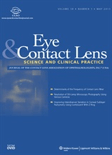
Eye & Contact Lens-Science and Clinical Practice
Scope & Guideline
Enhancing patient outcomes through dedicated research.
Introduction
Aims and Scopes
- Contact Lens Efficacy and Safety:
Research on the effectiveness and safety of various types of contact lenses, including soft, rigid gas permeable, and scleral lenses, for vision correction and management of ocular conditions. - Myopia Management:
Studies focusing on strategies to control myopia progression, particularly in children, including the use of orthokeratology, multifocal lenses, and pharmacological interventions. - Ocular Surface Disease and Dry Eye:
Investigations into the causes, prevalence, and treatment of dry eye disease, as well as the role of contact lenses in managing ocular surface conditions. - Corneal Health and Surgery:
Research on corneal diseases, surgical techniques, and post-operative care, including cross-linking therapies and keratoplasty. - Innovative Imaging and Diagnostic Techniques:
Development and evaluation of new imaging modalities and diagnostic tools for assessing ocular health, particularly in relation to corneal and anterior segment conditions. - Patient-Centric Outcomes and Quality of Life:
Focus on understanding patient experiences, satisfaction, and quality of life related to eye care and contact lens wear.
Trending and Emerging
- Artificial Intelligence and Technology in Eye Care:
Emerging research on the integration of artificial intelligence in contact lens fitting and management, enhancing personalized care and improving patient outcomes. - Scleral Lens Innovations:
A growing focus on scleral lenses, including their use in complex cases such as keratoconus and post-surgical rehabilitation, showcasing advancements in fitting techniques and materials. - Multifocal and Orthokeratology Lens Research:
Increased interest in multifocal and orthokeratology lenses for myopia control, particularly in pediatric populations, highlighting the need for effective strategies to combat the myopia epidemic. - Ocular Surface Microbiome Studies:
New research exploring the role of the ocular microbiome in eye health and disease, including its implications for dry eye and contact lens-related complications. - Telemedicine in Eye Care:
Emerging studies on the use of telemedicine for eye care consultations, particularly post-pandemic, addressing accessibility and patient management.
Declining or Waning
- Traditional Contact Lens Materials:
Research on older contact lens materials and solutions has decreased as newer materials and technologies gain prominence, reflecting a shift towards more advanced and comfortable options. - General Epidemiology Studies:
While epidemiological studies remain important, there has been a notable decline in studies focusing broadly on the prevalence of ocular diseases, as more specific and targeted research emerges. - Basic Mechanisms of Dry Eye Disease:
Research concentrating solely on the basic mechanisms of dry eye disease has waned, with a shift towards clinical applications and treatment strategies. - Non-Clinical Research on Contact Lens Use:
The volume of non-clinical research, such as theoretical studies or basic science not directly linked to clinical application, appears to be decreasing in favor of clinical efficacy and patient outcomes.
Similar Journals

Ophthalmology and Therapy
Advancing Eye Care Through Innovative ResearchOphthalmology and Therapy is a premier open-access journal published by Springer International Publishing AG, dedicated to advancing the field of ophthalmology through innovative research and clinical studies. With an ISSN of 2193-8245 and an E-ISSN of 2193-6528, this journal serves as a vital resource for researchers, healthcare professionals, and students interested in the latest developments in eye care and vision science. The journal has achieved a remarkable impact factor and has been recognized as a Q1 journal in Ophthalmology, reflecting its contributions to the discipline and its high-quality publications. Operating from the United Kingdom, Ophthalmology and Therapy is an open-access platform that has been available since 2012, ensuring that critical research is accessible to a global audience. Its commitment to fostering collaboration and knowledge sharing is exemplified by its ranking of #39 out of 137 in the Scopus category for Medicine – Ophthalmology, placing it in the 71st percentile of its peers. Together, these attributes highlight the journal's importance as a key forum for the dissemination of cutting-edge research, making it an essential addition to the libraries of institutions and professionals engaged in ophthalmic care.
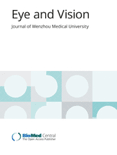
Eye and Vision
Advancing the frontiers of ophthalmology and visual sciences.Eye and Vision, published by BMC, is a leading open-access journal dedicated to the dynamic field of ophthalmology and visual sciences. With its ISSN 2326-0246 and E-ISSN 2326-0254, the journal has established itself as a premier platform for innovative research and clinical studies, achieving impressive rankings in 2023 as Q1 in both Health Professions (Miscellaneous) and Ophthalmology categories. The journal's commitment to accessible knowledge since its transition to open access in 2015 enhances its global reach, allowing researchers, clinicians, and students to share and access top-tier studies and advancements in the field. Located in the United Kingdom and delivering influential insights from 2014 through to 2024, Eye and Vision holds significant relevance, with a Scopus ranking placing it in the 99th percentile for Health Professions and the 93rd percentile for Ophthalmology, making it an essential resource for those looking to stay at the forefront of eye research and vision science.
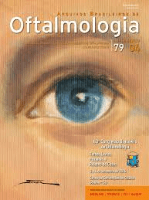
ARQUIVOS BRASILEIROS DE OFTALMOLOGIA
Advancing knowledge in eye health and innovation.ARQUIVOS BRASILEIROS DE OFTALMOLOGIA is a prominent peer-reviewed journal dedicated to the field of ophthalmology, published by CONSEL BRASIL OFTALMOLOGIA since its inception in 1945. With its commitment to disseminating high-quality research, the journal has transitioned to an Open Access model since 2001, ensuring that vital findings in ophthalmology are freely available to researchers, clinicians, and students alike. Located in São Paulo, Brazil, this esteemed publication occupies a significant position in the medical field, currently holding a Q3 ranking in both the miscellaneous medicine and ophthalmology categories. Although it maintains a legacy of fluctuating impact, recognized for its contribution to the academic community, ARQUIVOS BRASILEIROS DE OFTALMOLOGIA continues to attract a diverse international readership, making it a valuable resource for advancements in eye health, surgical techniques, and ocular research.
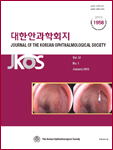
Journal of the Korean Ophthalmological Society
Empowering Vision through Innovative StudiesThe Journal of the Korean Ophthalmological Society, with ISSN 0378-6471 and E-ISSN 2092-9374, is a pivotal resource in the field of ophthalmology, published by the esteemed Korean Ophthalmological Society. Based in South Korea, this journal is committed to advancing knowledge in ophthalmology through the dissemination of research that spans both clinical and experimental studies. Despite its current Q4 ranking in the 2023 Ophthalmology category, it serves as a crucial platform for emerging scholars, practitioners, and students seeking to contribute to and learn from the latest developments in eye care. While the journal does not currently offer open access, it is dedicated to fostering scientific dialogue and innovation within the community. With convergence years from 2018 to 2024, the journal's focus on contemporary issues in ophthalmology positions it as a relevant and timely source of information, critical for those engaged in this dynamic field. For further inquiries, the journal can be contacted at their address in Seoul, South Korea: SKY 1004 BLDG 701, 50-1 Jungnim-ro, Jung-gu, 04508.

Journal of Ophthalmology
Illuminating Innovations in OphthalmologyThe Journal of Ophthalmology, published by HINDAWI LTD, is an esteemed open-access journal that has been disseminating significant research in the field of ophthalmology since 2009. With an ISSN of 2090-004X and an E-ISSN of 2090-0058, this journal facilitates global access to cutting-edge studies, making it an essential resource for researchers, clinicians, and students alike. Ranked in the Q2 category of ophthalmology for 2023, the journal holds a commendable position with a Scopus rank of #37 out of 137 in its field, placing it in the 73rd percentile. The journal encompasses a variety of topics such as clinical advancements, surgical techniques, and innovative technologies in eye care, aiming to advance scientific knowledge and clinical practice in ophthalmology. By providing a platform for both novel research and comprehensive reviews, the Journal of Ophthalmology is instrumental in fostering collaboration and scholarly communication within the global eye health community, and its commitment to open access ensures that impactful research reaches a wide audience without barriers.
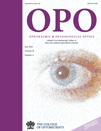
OPHTHALMIC AND PHYSIOLOGICAL OPTICS
Transforming insights into impactful clinical applications.Ophthalmic and Physiological Optics, published by Wiley, is a premier peer-reviewed journal dedicated to advancing the fields of ophthalmology, optometry, and sensory systems. With an impressive impact factor and categorized in the prestigious Q1 quartile for 2023 across multiple disciplines, the journal provides a vital platform for researchers and practitioners to disseminate innovative findings and explore the complexities of visual science. Founded in 1981, it continues to thrive as a leading resource for reviewing contemporary issues, emerging technologies, and clinical practices. Readers will benefit from its rigorous editorial standards and access to groundbreaking studies pertinent to both academic and clinical environments. Situated at the forefront of the discipline, Ophthalmic and Physiological Optics plays an essential role in bridging the gap between research and practical application, ensuring a comprehensive understanding of vision and its physiological underpinnings.

Translational Vision Science & Technology
Connecting Science and Technology for Visual HealthTranslational Vision Science & Technology is a premier open access journal dedicated to the advancement of the field of ophthalmology and biomedical engineering. Published by the Association for Research in Vision and Ophthalmology, Inc., this journal has established itself as a leading source of high-quality research since its inception in 2013, achieving a remarkable impact factor reflective of its influential contribution to the field. With an impressive ranking of #21 in Ophthalmology and #120 in Biomedical Engineering within the Scopus database, it sits within the prestigious Q1 quartile for both categories as of 2023, further validating its significance. The journal's scope encompasses a wide variety of topics focused on the intersection of ophthalmological science and technological innovation, welcoming contributions that promote the understanding and treatment of visual disorders. Available as an Open Access publication since 2016, it ensures that cutting-edge research is freely accessible to researchers, practitioners, and students worldwide, facilitating the rapid dissemination of knowledge essential for the advancement of vision science.
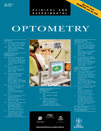
Clinical and Experimental Optometry
Connecting academia and clinical expertise in vision science.Clinical and Experimental Optometry, published by Taylor & Francis Ltd, is a distinguished journal dedicated to advancing the field of optometry and ophthalmology. With an impressive scope covering both clinical practices and experimental research, this journal serves as a vital resource for researchers, healthcare professionals, and students alike. Recognized in the Q2 category for Ophthalmology and Q1 category for Optometry in 2023, it underscores its significance in fostering innovative research and clinical knowledge. The journal has been in publication since 1986 and continues to accept contributions up until 2024, reflecting its ongoing commitment to disseminating high-quality scholarly work. With a Scopus ranking of 40 in Ophthalmology and 5 in Health Professions - Optometry, it is positioned among the leading journals in the field. Although not an open-access journal, it remains integral for anyone invested in the latest trends and findings in vision science, making it an essential part of the academic landscape in the UK and beyond.

African Vision and Eye Health Journal
Fostering collaboration for better vision health.African Vision and Eye Health Journal is an esteemed publication dedicated to advancing the fields of ophthalmology, optometry, and public health across the African continent. Published by AOSIS, this journal serves as a vital platform for disseminating research, clinical practices, and educational advancements aimed at improving eye health and vision care. As an Open Access journal, it ensures that knowledge is freely accessible to researchers, healthcare professionals, and practitioners, fostering collaboration and innovation. With its ISSN 0378-9411 and E-ISSN 2410-3039, the journal is committed to enhancing the understanding of vision-related issues affecting diverse populations, making it an invaluable resource for those dedicated to the promotion of eye health in Africa. By providing cutting-edge research and insights, the African Vision and Eye Health Journal plays a critical role in addressing the challenges of eye health and is a key resource for anyone committed to making a difference in this essential field.

Open Ophthalmology Journal
Fostering discovery in the realm of ocular health.The Open Ophthalmology Journal, published by Bentham Science Publishers Ltd, is a vital resource in the field of ophthalmology, dedicated to advancing knowledge through open-access research. With an ISSN of 1874-3641, it offers a platform for the dissemination of innovative studies from 2011 to 2024, focusing on the latest developments in eye care and vision science. Despite being categorized in the lower quartile (Q4) according to the 2023 rankings, and holding a position in the Scopus Ricks at 113 out of 137 in the ophthalmology domain, the journal serves as a valuable outlet for emerging scholars and seasoned researchers alike to share their findings. The journal's commitment to accessibility ensures that its content is available to a broad audience, promoting collaboration and knowledge exchange. Located in the Netherlands, The Open Ophthalmology Journal aspires to become a cornerstone for those passionate about understanding and improving ocular health through rigorous scientific inquiry.